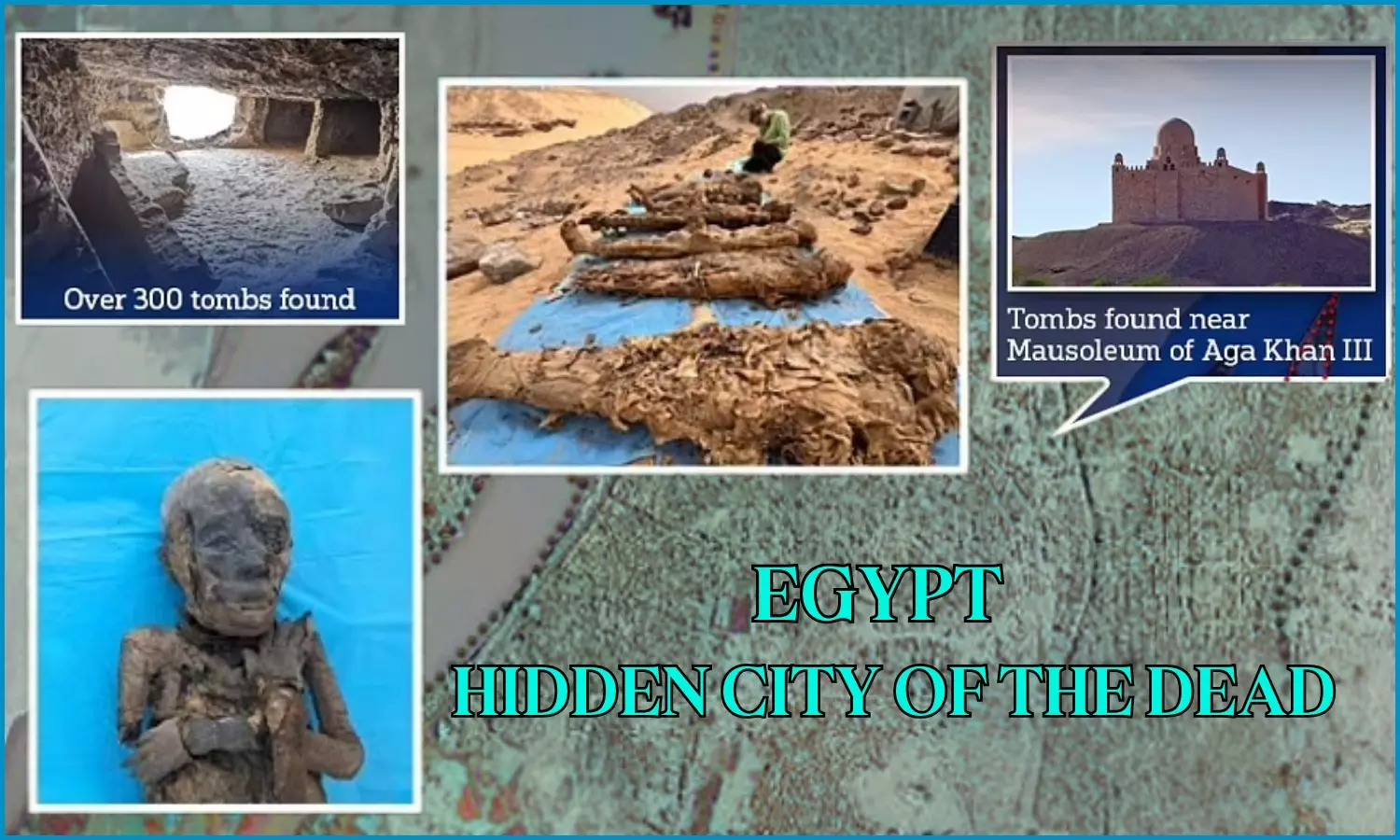Unearthing Aswan's 'City of the Dead': 1,400 Mummies Breathe Life into Egypt's Storied Past

Archaeologists have found a massive "City of the Dead" in Egypt that holds secrets about an ancient civilization. Discovering a sizable necropolis in the ancient Egyptian city of Aswan that contains over 1,400 centuries-old mummies has been hailed as a remarkable archaeological discovery. Like a "City of the Dead," this incredible find sheds new light on the colourful past and diverse population of this once-active hub of trade, quarrying, and warfare. Originally called Swenett and then Swan, or "market," Aswan is a city on the east bank of the Nile River with a rich historical background dating back more than 4,500 years. Due to its advantageous position at a crossroads, ancient Persians, Egyptians, Romans, Greeks, and subtropical Africans came to settle there.
Now, the last resting place of this lively society has been revealed through the excavation of 36 tombs, each containing 30 to 40 corpses. Over the past five years, the University of Milan's Patrizia Piacentini has led the archaeological team that has been working nonstop at the site. Their work has revealed a vast burial ground spanning about 270,000 square feet, with up to ten terraces of interred tombs layered on a hill close to the current Aga Khan III Mausoleum. With the middle-class people buried below and the aristocrats buried at the top of the hill, the excavation has exposed an astonishing degree of social stratification. This configuration alludes to a highly structured civilization in which the final resting place of an individual was decided by their standing and role in the society. The tombs are surprisingly extensive, ranging from approximately 600 BC to 300 AD, which includes the Greek Ptolemaic dynasty, the Roman Empire, and Persian domination. This length of time offers a singular view into the evolving power dynamics that formed the region and the population evolution of Aswan. The evidence of infectious diseases that may have taken the lives of many of the people interred in the necropolis is among the most fascinating features of this discovery. Early examinations of the mummies have shown evidence of anaemia, malnourishment, amputation, and tuberculosis, indicating that the people of Aswan had serious health issues.
Finding whole families buried together supports the theory that numerous people may have died at the same time from infectious diseases that swept across the region. According to Ayman Ashmawy, the head of the Supreme Council of Antiquities' Egyptian Antiquities Division, between 30 and 40 per cent of the people interred were either babies or teenagers when they passed away. The archaeological community is enthralled by this "City of the Dead" because of its immense size and significance, and the team is determined to keep working to unearth Aswan's complex population dynamics and varied history. The chief archaeologist, Piacentini, has underlined the significance of handling the site with the highest care and respect to guarantee that the mummies are maintained and that their stories are told.
The globe is excitedly awaiting the revelations this amazing find will provide as the excavation moves forward, as it will throw new light on the customs, beliefs, and struggles of the people who lived in this ancient Egyptian city. A tribute to the ingenuity and perseverance of a society that radically changed the course of human history is the "City of the Dead".

